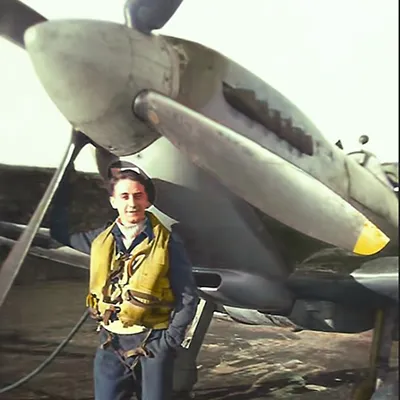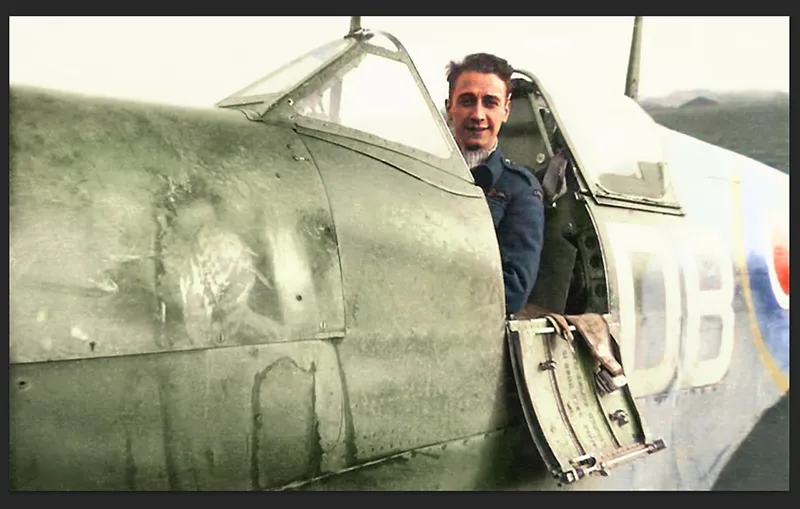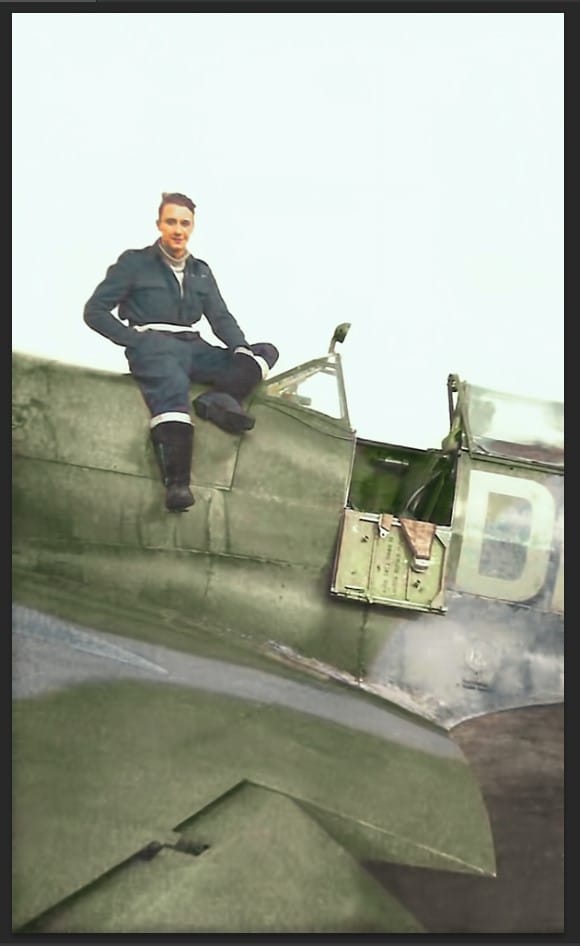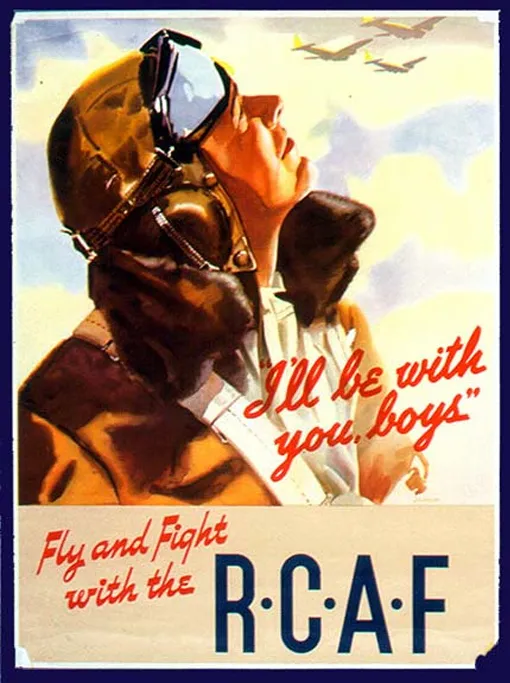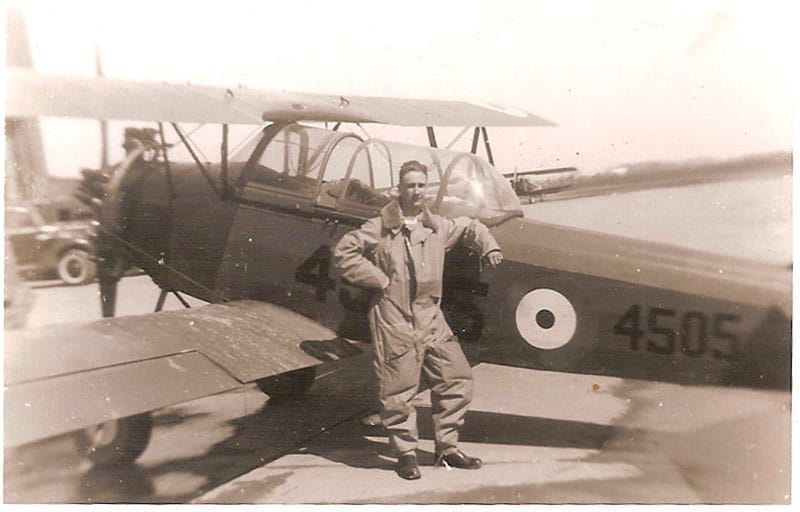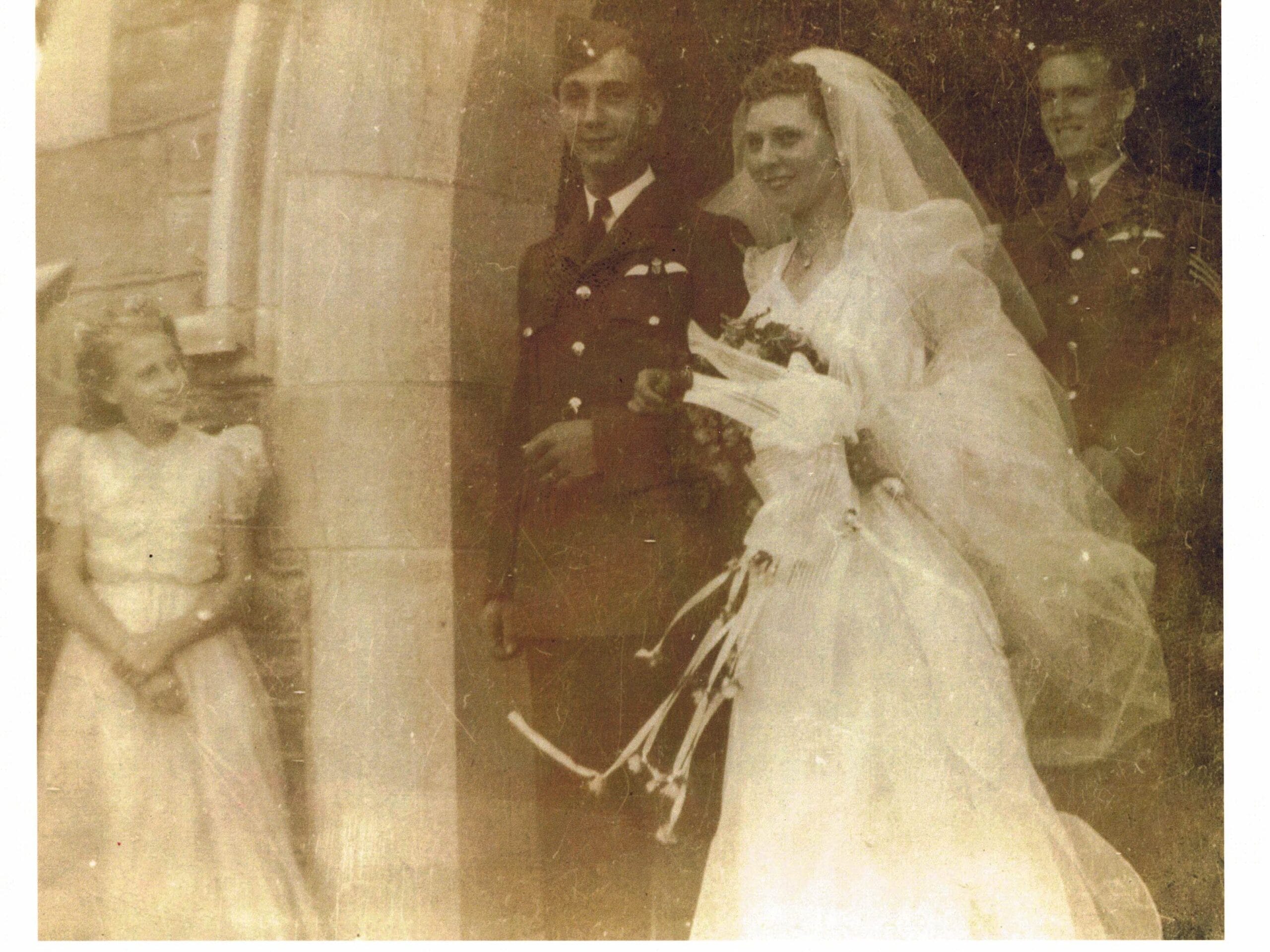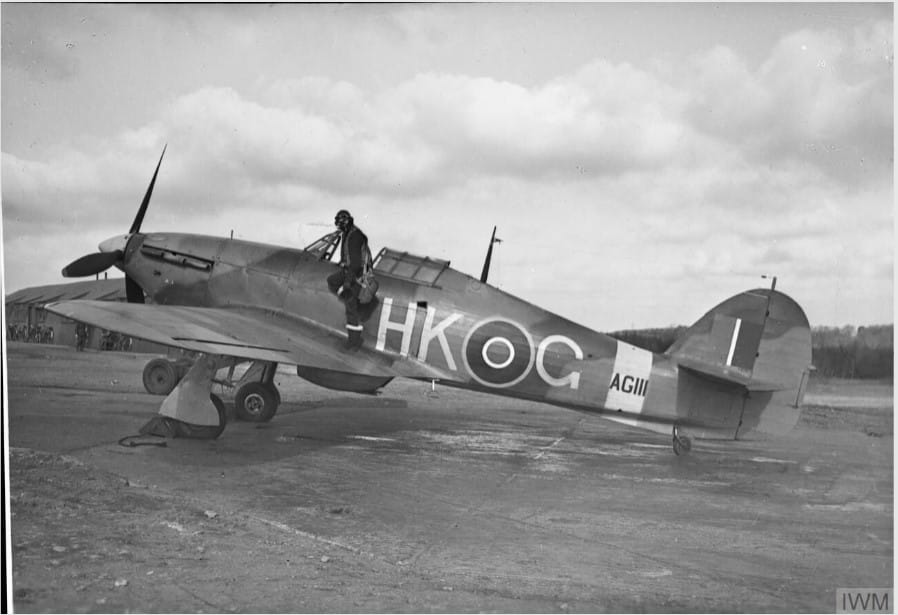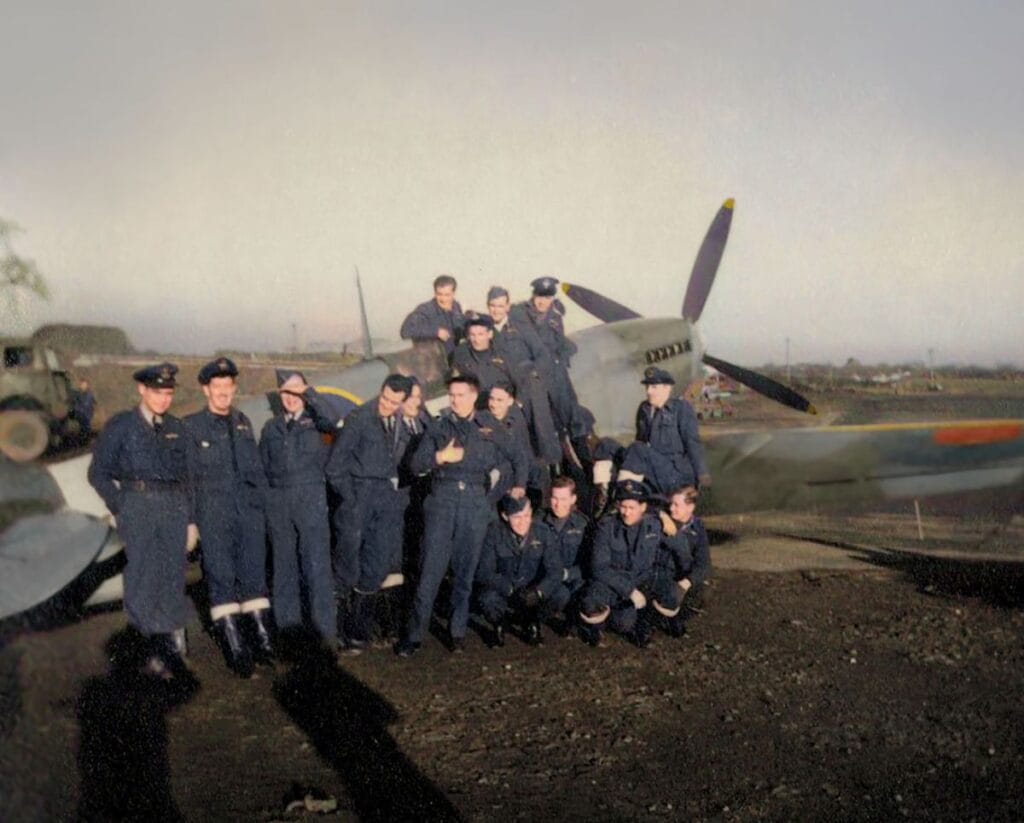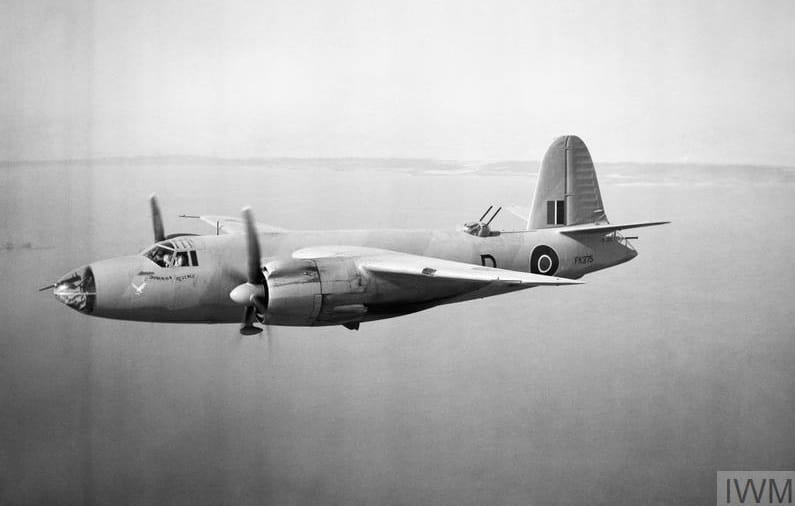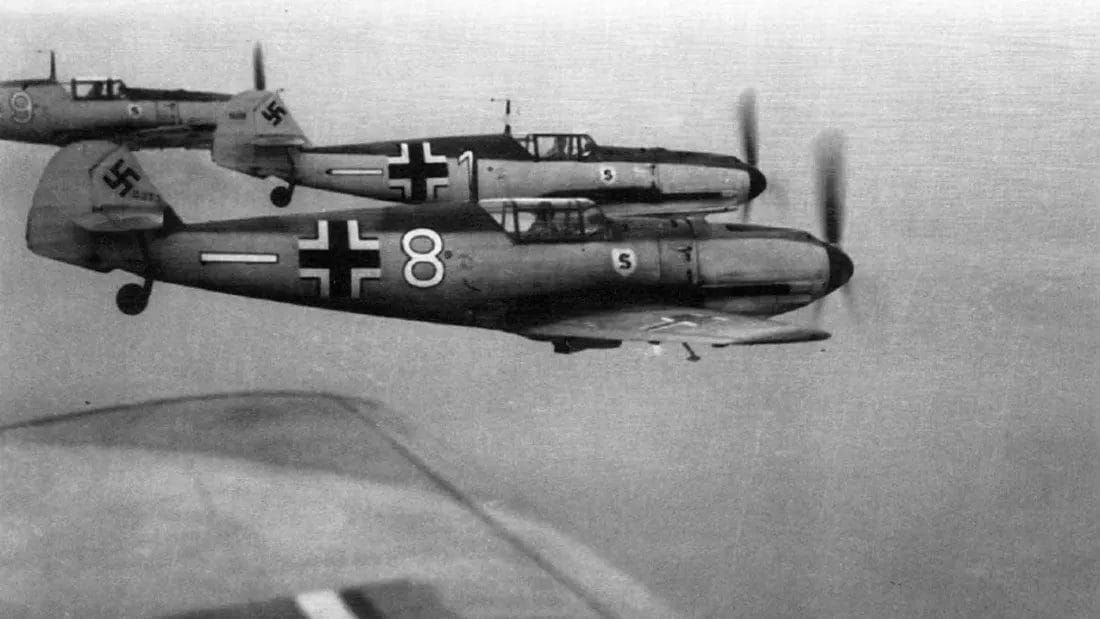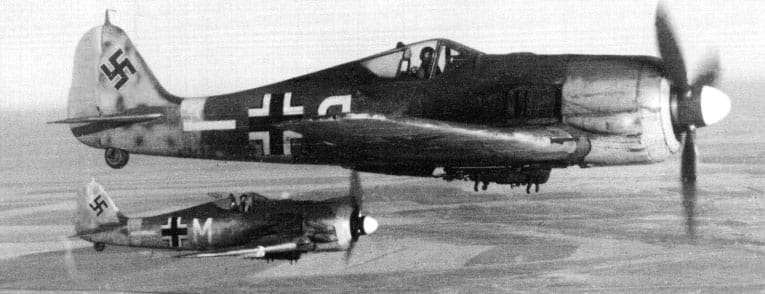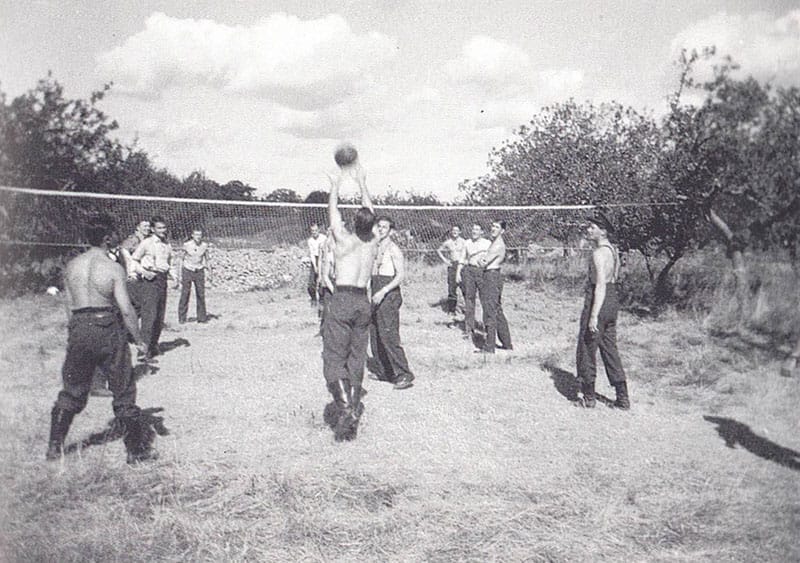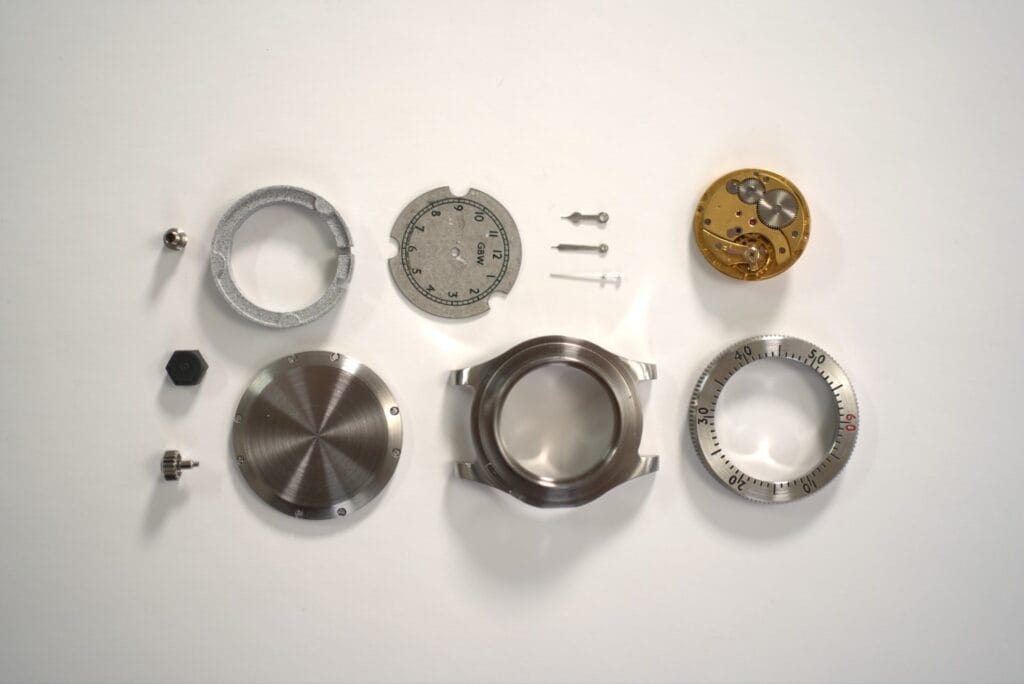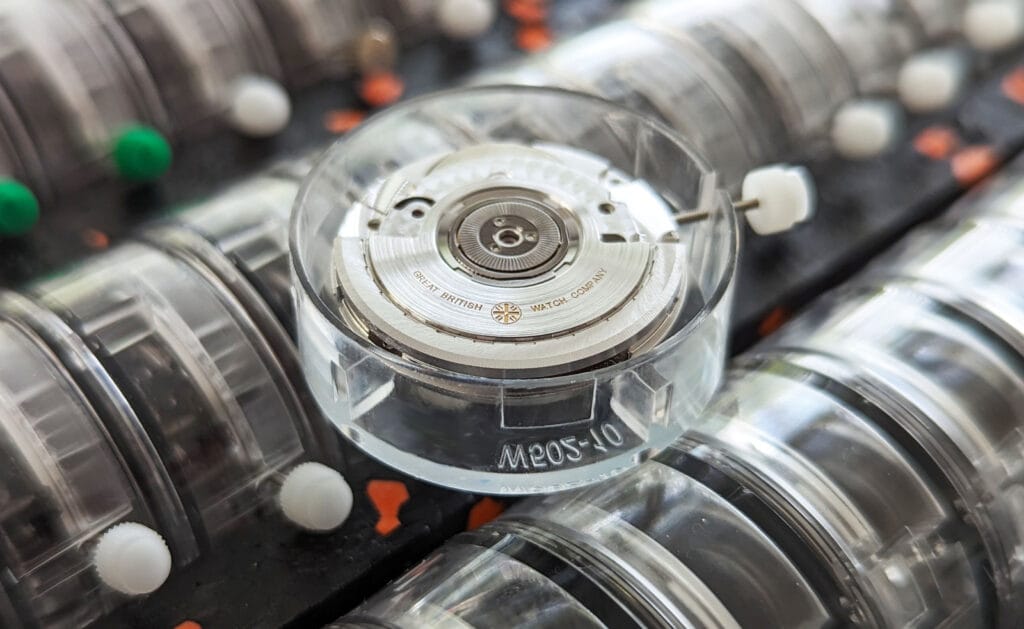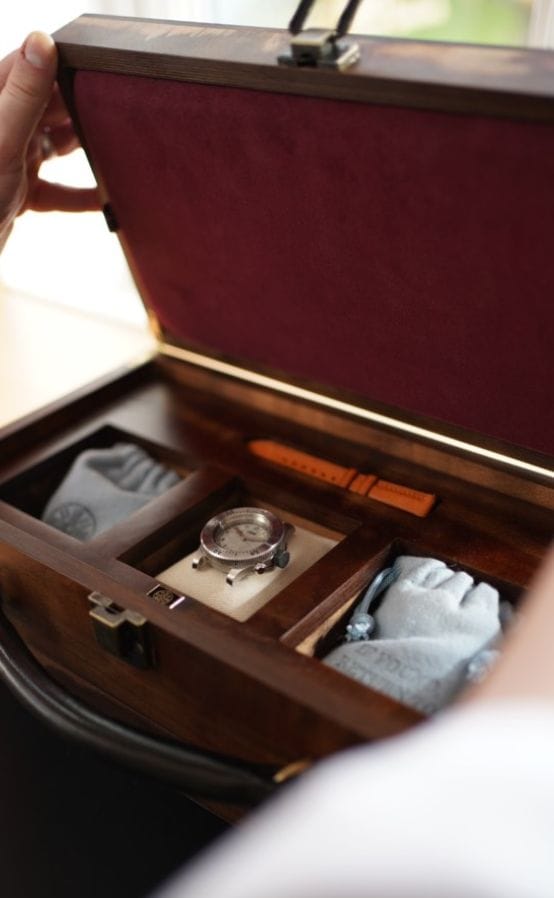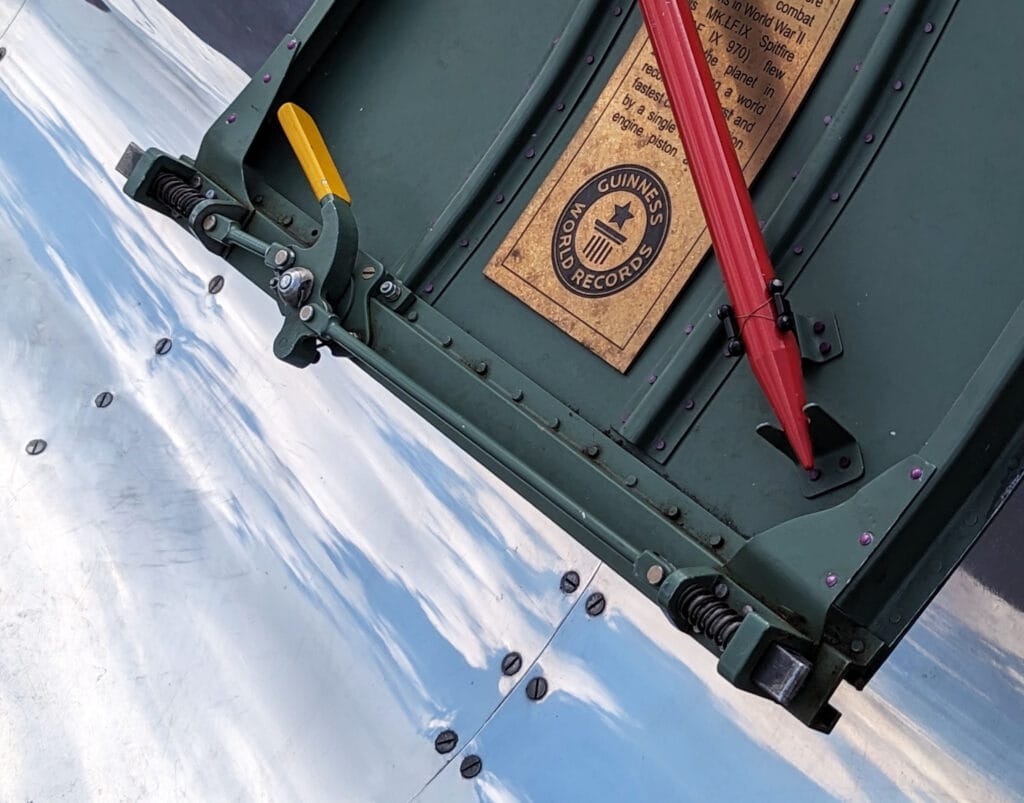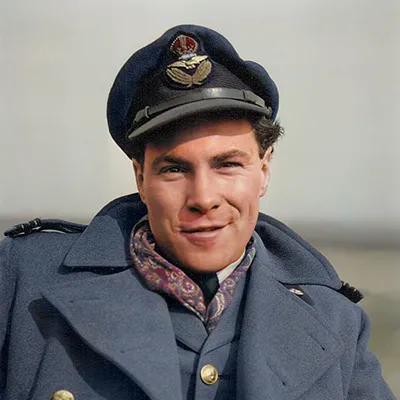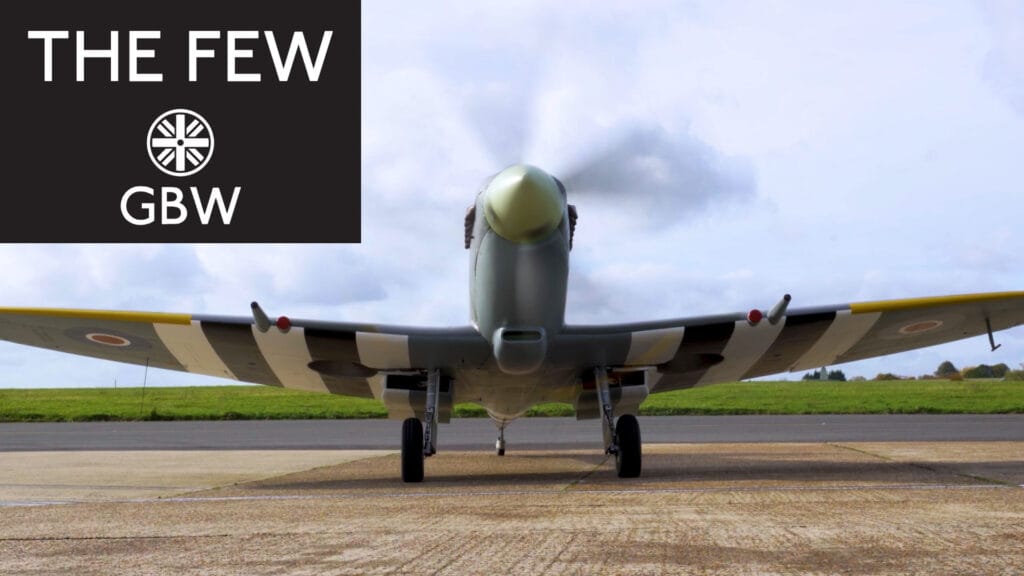79 years ago, Spitfire ML295, piloted by Harold Kramer of 411 Squadron, was hit by anti-aircraft fire while flying on a mission in Northern France. Kramer, known as Hal to his wartime friends, managed to glide his Spitfire down safely and make an escape.
This Spitfire has now been recovered and restored and is flying again from Biggin Hill Airfield, with part of the original aircraft being used in the creation of The Few, a watch I am making (a full breakdown of the progress of this project is at the end of this Sortie).
Harold “Hal” Kramer sat in a Spitfire, possibly ML295
Spitfire ML295 flew 67 combat missions in total, with 37 of those sorties flown by Hal. Although 10 other airmen in the squadron took the pilot’s seat, they all, along with Kramer himself, would have viewed Spitfire ML295 as Hal’s personal aircraft. The hand-built nature of war-time Spitfires meant that each aircraft was slightly different, having their own quirks and characteristics – something akin to a personality, which the pilots became attached to. There is also some chance that the Spitfire was named after Harold’s wife Dorothy, or Dot, with her name painted underneath the cockpit door.
The story of Spitfire ML295 is therefore closely intertwined with that of Harold Kramer.
We will start this 4 part biography with Hal training to become a pilot, his first operational missions and the start of his life in the Squadron.
An Ordinary Hero
Kramer was one of the core “founding” members of 411 Squadron, a group of Spitfire pilots from Canada who gave themselves the moniker the Roaring Boys – perhaps due to their habit of letting out a roar when the MGM lion appeared during the start of a film.
Around this core, the squadron’s culture, camaraderie, humour and work ethic was set, leading 411 Squadron to regarded as one of the most successful Spitfire squadrons in the war.
Hal posing with a newly delivered Spitfire
Like many people that were active during the war, once they had returned home they dealt with the many traumatic events they had witnessed by trying to put it to the back of their mind, and not talk about their experiences. Although Harold is no longer alive to ask, and his personal logbook has been lost, we are thankfully able to piece together a compelling story from the squadron’s records and official reports, which often make reference to Hal.
Both Kramer and Spitfire ML295’s stories are one of service, dedication, sacrifice and ultimately, survival.
Harold Kramer
Harold was born in 1919 in Port Colbourne, a small town not far from Niagara Falls in Ontario, Canada. Being just 20 when the war broke out, Harold had made an early decision to become actively involved in the war effort. While studying mechanical engineering at the University of Toronto he enrolled in the university’s auxiliary battalion, where he would have been introduced to the discipline of the armed forces.
Being a pilot in the war was heavily romanticised
After graduating in 1941, Kramer moved into the Reserves of the Active Militia before taking a summer job at the International Nickel Company in his hometown. On 20th August 1941, Harold travelled to Hamilton and signed up at the Royal Canadian Airforce (RCAF) Recruiting Centre, volunteering to be a pilot. Two weeks later his flight training began.
Learning to Fly
After the success of the Battle of Britain, Fighter-Command wanted to improve the pilot training situation and so through the British Commonwealth Air Training Plan, volunteer pilots in Canada were trained to prepare them for front line operations against the Luftwaffe. Their instructors included pilots who had flown during the Battle of Britain and they were able to pass on their valuable learned experience.
Hal Kramer in 1941 at the Elementary Flying Training School in London, Ontario. He is alongside a Fleet Finch, which was a locally produced biplane that pilots spent their first 50 hours of flying in
By this time in the war the Spitfire was a proven aircraft, with the limits of its performance and capabilities fully tested. The pilots were trained to know their Spitfires inside out and flew them like an extension of their own bodies. They were also fully aware of all the types of German aircraft they would encounter, what each type was capable of, and which tactics to use to defeat them.
These young men were not just professional pilots, but professional Spitfire pilots, specifically trained to face and neutralise the current German threat.
A year after Kramer volunteered as a pilot, he earned his wings and was given the non-commissioned to the rank of Sergeant. In the two weeks of leave before he was due to ferry out, he married his sweetheart Dorothy, and then after saying his final goodbyes, Hal left for England and the war.
After leaving for England, Hal would not see his new bride again for over a year
Training to Become a Fighter Pilot
Arriving in November 1942 at No. 5 Advanced Flying Unit (AFU) based in RAF Tern Hill in Shropshire, Hal began training on a Miles M.9 Master, an advanced two-seater trainer aircraft that was used as an introduction to high performance fighter aircraft such as the Spitfire and Hurricane.
After spending a month getting to grips with the Miles Master, Kramer was now an accomplished pilot, comfortable in an array of aircraft. He was ready to start the final part of his training; to become an effective fighter pilot.
A Hurricane at the No.59 Operational Training Unit, coincidentally with Harold’s initials on its flanks
Moving to the No. 59 Operational Training Unit (OTU) at RAF Milfield in Northumberland, Hal was introduced to the Hurricane. Being the first single-seater aircraft that he had flown in, it was also the first time that he would have flown solo and so would have had a good mixture of nerves and excitement as he took off from the runway.
Not long after, his dream became a reality and he converted from flying Hurricanes to Spitfires.
At RAF Milfield the training was intense, relentless and thorough. Over the next 6 months Kramer practiced everything from formation flying to writing military reports. He learned his gunnery skills and tail chasing – a cat and mouse game where pilots took it in turns to try and follow the lead aircraft while they in turn tried to shake them off.
Link Trainer
Part of the ongoing training that continued even after Hal was operational, was to use a Link Trainer. Named after the developer, Edwin Link, the trainer was the world’s first flight simulator, boasting an accurate cockpit and controls that provided feedback to the pilot and hydraulically turned and tilted them as they moved the flight stick.
Although used to help teach pilots a number of skills, it was predominately used to practice flying blind or by instrument only, to prepare them for situations where visibility was zero – such as at night or in heavy fog.
Link Trainer, the world’s first flight simulator
If you are interested in learning more about this amazing piece of machinery, here is a video of Guy Martin using a Link Trainer: https://www.youtube.com/watch?v=qhGGljiUR2c
Joining 411 Squadron and Hal’s First Mission
Now with almost 2 years of intense training behind him, Hal was deemed ready for front line operational flying and was assigned to 411 Squadron, based at RAF Redhill in Surrey, where he joined them on 12th July 1943.
411 Squadron, with Kramer standing in the very centre of the photo
After a few days to settle in and meet his squadron mates, Kramer took off on his first sortie on 16th July 1943. He was flying in a Spitfire Mark 5b, registration BL347.
The Squadron’s notes detail the mission:
“A Ramrod operation to Abbeville marshalling yards by 16 Marauders escorted by 401, 412 and 411 Squadrons was carried out. Wing Commander Russel led the escort to the rendezvous at Beachy Head at 19.45 hours at 11,500 feet, crossed the French coast at the Somme estuary at 11,500 feet at 20.05 hours, and to the target at 20.10 hours. The bombing results were not observed by the escort. Medium flak, accurate for the height was encountered. On the way out approximately five miles south of Bayeux No 412 Squadron was attacked by two F.W. 190’s of some 15 to 20 in the vicinity. The enemy aircraft were out of range when they fired and broke away immediately. The cloud formation over the channel was 5/10 cumulus. At the target, however, visibility was unlimited. No shipping was observed, all aircraft returned to base.”
Kramer’s first mission report
Kramer’s next mission was not until 27th July 1943, when he was part of a sea rescue mission to find the Squadron Leader of 412 Squadron. Due to engine trouble on a sortie earlier that day, the pilot had been forced to bail out into the English Channel just off the French coast. The weather wasn’t good however, and they were only afforded a 15 minute window to search for the pilot, which proved unsuccessful. Thankfully the pilot was later safely rescued by a Walrus aircraft – an amphibious bi-plane designed by the Spitfire’s creator, R. J. Mitchell.
B-26 Marauder
The B-26 Marauder, the bomber that Hal had escorted in his first mission, was a difficult aircraft to fly, particularly during take-off and landing, as the aircraft had the tendency to stall and crash unless a high speed, 150mph, was kept up on the final runway approach. Owing to the regularity of accidents, B-26 crews gave the aircraft an assortment of unflattering nicknames including Widowmaker, Martin Murderer, Flying Coffin, B-Dash-Crash, Flying Prostitute and Baltimore Whore – named for the city where the B-26 was built.
When the B-26 came to Europe, initially the tactics used were copied from those that had been tried and tested in the North African campaign, which involved flying low and unescorted. However, on the second mission flown by the B-26 in Europe, these tactics resulted in all 11 aircraft being lost to enemy aircraft and flak.
The Martin B26 Marauder was an American-made medium bomber
The Ramrod
This horrific loss resulted in a swift change of tactics to ensure that the Marauder would never fly without a fighter escort again. It was also ordered to keep to an altitude of between 10,000-15,000 feet (3,500-5,000m). Thus, the Ramrod mission was born.
The majority of 411 Squadron’s sorties during 1943 and early 1944 were Ramrods, operations where the Spitfires provided fighter cover to B-26 bombers attacking targets in German occupied Europe.
With this change in tactics, the Marauder grew to be considered not only one of the most accurate late war bombers available, but also the safest, with a reported operational loss rate of just 0.5% in the European theatre.
On 7th August 1943, the squadron relocated to RAF Staplehurst in Kent, where over the next few months, the Roaring Boys enjoyed great success in their escort duties, with almost all of the Ramrod missions successful – with targets bombed, no enemy aircraft engaged and no friendly aircraft lost.
The exception to this was on 2nd September 1943 when a Martin B-26 Marauder was hit by anti-aircraft flak and exploded with all 7 crew perishing. This would have been the first time that Kramer would have witnessed death so close up, and during the dozens of Ramrod sorties flown by 411 Squadron it was the only loss of an escorted bomber.
First Contact
On one mission while escorting a group of 72 B-26 Marauders, they were attacked by a group of Focke-Wulf 190 (FW190) fighters, and later a larger group consisting of a mix of 20 Messerschmitt Bf109 and FW190 aircraft.
In the resulting melee, before the Spitfires were able to chase the Luftwaffe aircraft away, some of the bombers were badly shot up, but nevertheless survived. During the engagement, one of the Spitfire escorts flown by Flying Officer Haw was shot down – with the pilot reported missing. At the time, the fellow pilots were unaware of Haw’s fate, although post-war records show that he survived and became a prisoner of war. This incident was Kramer’s first encounter with engaging enemy fighters on a mission, providing him with a taste of both the dangers and excitement of air-to-air combat.
The Bf109 built by Messerschmitt was the Luftwaffe’s main single engine fighter used during WW2
The FW190 built by Focke-Wulf was more robust and heavily armed than the Bf109 and earned a fearsome reputation
Relaxation
It wasn’t all hard work though. On rainy days where no flying took place, the boys made themselves busy with socialising and relaxing. One typical free day was spent by them all going for lunch, followed by a trip to the local swimming baths, then the “flicks” (cinema), before a pub crawl which ended up at a dance pavilion.
A variety of games and sports were played including table tennis, badminton, basketball, volleyball and clay pigeon shooting. A competitive element was often added, with everyone chipping in to a pot for the winner.
There was even an inter-squadron baseball league, however this wasn’t 411’s strong point and in their first game against 401 Squadron, they were beaten by 6 points.
The Roaring Boys enjoying a game of volleyball. In one such game on 18th September 1943, Tommy Wheler, who we talked about in Sortie 15, had an accidental knock into Squadron Leader Semple which dislocated his boss’ knee! The injury meant an end to Semple’s flying career, with Ian Ormston taking over command
The Few Watch Progress
Below I will go through the current progress of The Few watch (as at September 2023):
The watch dials and hands, made from a piece of Spitfire ML295’s original wing, have all been completed
The first finished cases of the watch should be ready by September 2023 – all manufactured locally using British steel
A stock of ETA 2892-A2 movements have all been finished and branded, with a stock of British-made Smiths 0104 movements currently being serviced and finished
The boxes of the watch are currently being made locally from hydulignum – the wood composite used in Spitfire propellors. The first of these should be completed in August 2023
I wasn’t particularly happy with the basic latch we were using for the box in the prototype, and so a local engineering firm are producing working replicas of a Spitfire’s door latch instead. The idea being that to open the lid of The Few’s box, you feel like you’re opening the door to a Spitfire
To complete all of the personalisation on the watch I have ordered a laser which will be able to engrave and anneal the watch cases and crown. It is the same machine the Assay Office use to add their hallmark
The Few Watch Progress – Everything Else
The sapphire glasses of the watch are currently being produced and engraved with a “hidden” logo (only visible under magnification from a certain angle).
The watch straps, buckle, cufflinks and escape maps are ready. With the book, that fits into the drawer of the watch box, currently being completed – it will feature the stories I am recounting in each Sortie.
For everyone following the development of The Few, during Summer 2024 we will hold an event to celebrate the 80th anniversary of Spitfire ML295 becoming operational. Details to follow later.
Finally, to ensure that the project is carbon negative, a tree will planted for each watch – the site of which has been secured. Due to the hand-made and locally produced nature of the project, the entire carbon footprint for each watch will be covered by over 10 times within the first year – with every year after that providing an ongoing benefit.
Next Part
This is the first in a four part biography of Harold Kramer, with each part being published on a roughly monthly basis. If you would like to receive each part a month early, please subscribe to my newsletter by entering your details below.
In the next Sortie, Hal will celebrate his first Christmas at war and the Spitfires take a break from escorting bombers to become fighter-bombers themselves. With Spitfire ML295 being delivered to the squadron, the boys focus on softening up the Germans in preparation for the D-Day landings.
See you there.




